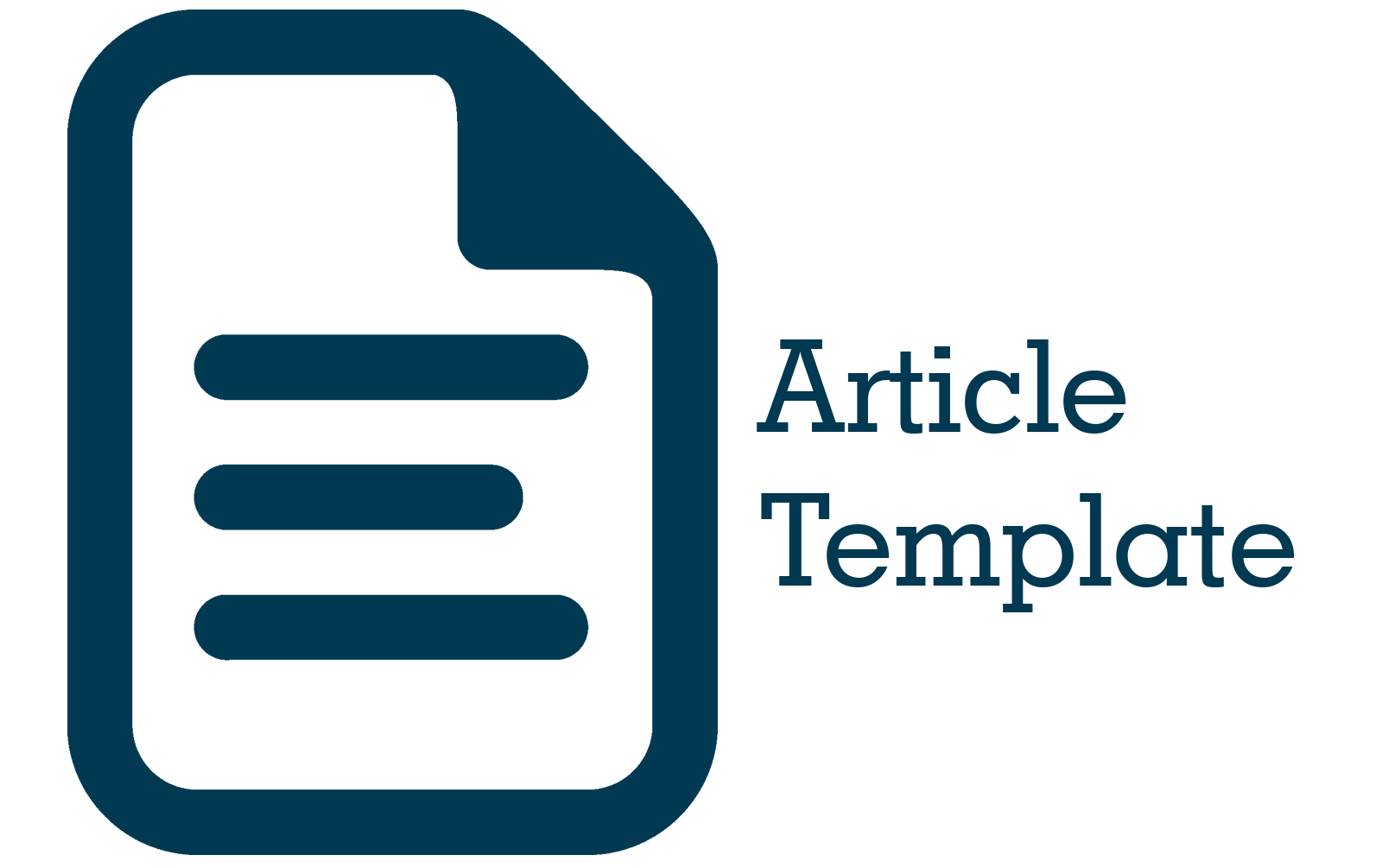Penerapan Metode Geographically and Temporally Weighted Regression pada Persentase Penduduk Miskin di Papua Tahun 2019-2020
Abstract
Abstract. Linear regression analysis is a method used to model the relationship between the dependent variable and the independent variable. The parameters of the resulting regression model will have the same value (global). In data that contains spatial heterogeneity, linear regression analysis is not appropriate to use because there is variation between observation locations. A suitable method is Geographically Weighted Regression (GWR). However, GWR is only limited to cross-section data. If the data used is panel data, a more appropriate method is Geographically and Temporally Weighted Regression (GTWR). GTWR takes into account time variability (temporal heterogeneity), so that the resulting parameters will be different for each location and time of observation. Estimating regression parameters in this method uses Weighted Least Square (WLS). This research will discuss the application of the GTWR method to the Percentage of Poor Population in Papua, with the dependent variable used being the Percentage of Poor Population, while the independent variables used are School Enrollment Rate (16-18 Years), Labor Force Participation Rate, Morbidity Rate, Ratio Gini in Papua Province in 2019-2020. The results of applying GTWR produced 58 models and grouping of significant factors to form 6 groups in 2019 and 1 group in 2020.
Abstrak. Analisis regresi linear adalah metode yang digunakan untuk memodelkan hubungan antara variabel dependen dengan variabel independen. Parameter model regresi yang dihasilkan akan bernilai sama (global). Pada data yang mengandung heterogenitas spasial, analisis regresi linear kurang tepat digunakan karena terdapat keragaman antar lokasi pengamatan. Metode yang cocok adalah Geographically Weighted Regression (GWR). Namun, GWR hanya terbatas pada data cross-section. Apabila data yang digunakan adalah data panel, metode yang lebih tepat adalah Geographically and Temporally Weighted Regression (GTWR). GTWR ini memperhatikan adanya keragaman waktu (heterogenitas temporal), sehingga parameter yang dihasilkan akan berbeda untuk setiap lokasi dan waktu pengamatan. Pendugaan parameter regresi pada metode ini menggunakan Weighted Least Square (WLS). Pada penelitian ini akan membahas penerapan metode GTWR pada Persentase Penduduk Miskin di Papua, dengan variabel dependen yang digunakan adalah Persentase Penduduk Miskin, sedangkan variabel independen yang digunakan adalah Angka Partisipasi Sekolah (16-18 Tahun), Tingkat Partisipasi Angkatan Kerja, Angka Kesakitan, Rasio Gini di Provinsi Papua pada tahun 2019-2020. Hasil penerapan GTWR menghasilkan 58 model dan pengelompokkan faktor-faktor yang signifikan membentuk 6 kelompok pada tahun 2019 dan 1 kelompok pada tahun 2020.
References
Brunsdon, C., Fotheringham, A. S., & Charlton, M. (1999). Some Notes on Parametric Significance Tests for Geographically Weighted Regression. Journal of Regional Science, 39(3), 497–524.
Caraka, R. E., & Yasin, H. (2017). Geographically Weighted Regression (GWR) Sebuah Pendekatan Regresi Geografis. (Edisi Pertama). Yogyakarta: Mobius.
Debataraja, N. N., Kusnandar, D., & Mahalalita, R. (2019). Penerapan Model Geographically and Temporally Weighted Regression Pada Kecelakaan Lalu Lintas. Jurnal Siger Matematika, 2(1), 19–24.
Djalihu, H., Djuraidah, A., & Soleh, A. M. (2012). Model Autoregressif Terboboti Geografis dan Temporal untuk Memodelkan Tingkat Kemiskinan di Pulau Jawa Tahun 2012-2018. Seminar Sekolah Pascasarjana Institut Pertanian Bogor, 1–10.
Huang, B., Wu, B., & Barry, M. (2010). Geographically and temporally weighted regression for modeling spatio-temporal variation in house prices. International Journal of Geographical Information Science, 24(3), 383–401. https://doi.org/10.1080/13658810802672469.
Kevin, A. V., Bhinadi, A., & Syari’udin, A. (2022). Pengaruh PDRB, Angka Harapan Hidup, dan Rata-rata Lama Sekolah Terhadap Kemiskinan di Kabupaten/Kota Provinsi Jawa Tengah Tahun 2013-2021. SIBATIK JOURNAL: Jurnal Ilmiah Bidang Sosial, Ekonomi, Budaya, Teknologi, Dan Pendidikan, 1(12), 2959–2968. https://doi.org/10.54443/sibatik.v1i12.482
Laksana, S. E. A. (2018). Pemodelan Kebakaran Hutan di Provinsi Riau dengan Metode Geographically-Temporally Weighted Regression.
Lu, B., Charlton, M., & Fotheringham, A. S. (2011). Geographically Weighted Regression using a non-Euclidean distance metric with a study on London house price data. Procedia Environmental Sciences, 7, 92–97. https://doi.org/10.1016/j.proenv.2011.07.017.
Purba, N. S., & Soleman, L. A. (2020). Spatial Analysis of Factors Affecting Poverty in Papua Province in 2019. Prosiding SENANTIAS 2020, 1(1), 71–80.
Sholihin, M., Soleh, A. M., & Djuraidah, A. (2017). Geographically and Temporally Weighted Regression (GTWR) for Modeling Economic Growth using R. IJCSN-International Journal of Computer Science and Network, 6(6), 800–805. www.IJCSN.orgImpactFactor:1.5800
Soemartojo, S. M., Ghaisani, R. D., Siswantining, T., Shahab, M. R., & Ariyanto, M. M. (2018). Parameter estimation of geographically weighted regression (GWR) model using weighted least square and its application. AIP Conference Proceedings, 2014, 1–11. https://doi.org/10.1063/1.5054485.
Yasin, H., Warsito, B., & Rachman Hakim, A. (2020). Regresi Spasial (Aplikasi dengan R). Ponorogo: WADE Group.
Yuhan, R. J., Raja, J., Sitorus, H., Tinggi, S., & Statistik, I. (2017). Geographically Weighted Regression pada Karakteristik Penduduk Hampir Miskin di Kabupaten/Kota Pulau Jawa. Jurnal Ilmiah WIDYA Eksakta, 1(1), 41–47.
E. Firdayanti, D. 1, and N. Hajarisman, “Penanganan Data Hilang pada Pemodelan Persamaan Terstruktur melalui Metode Full Information Maximum Likelihood (FIML),” vol. 1, no. 1, pp. 11–18, 2023, doi: 10.29313/datamath.v1i1.10.
Fatmawati and N. A. K. Rifai, “Klasifikasi Penyakit Diabetes Retinopati Menggunakan Support Vector Machine dengan Algoritma Grid Search Cross-validation,” Jurnal Riset Statistika, pp. 79–86, Jul. 2023, doi: 10.29313/jrs.v3i1.1945.
A. P. Asti and Sutawanir Darwis, “Deteksi Kerusakan Bearing Menggunakan Komponen Utama Kernel,” Jurnal Riset Statistika, pp. 19–26, Jul. 2023, doi: 10.29313/jrs.v3i1.1771.
B. Huang, B. Wu, and M. Barry, “Geographically and temporally weighted regression for modeling spatio-temporal variation in house prices,” International Journal of Geographical Information Science, vol. 24, no. 3, pp. 383–401, Mar. 2010, doi: 10.1080/13658810802672469.











